- Home
- Locations
- bayernhafen Nuremberg
bayernhafen Nürnberg is one of Europe’s most important freight transport and logistics centres. It efficiently links road, rail and inland waterway. The mix of industries at bayernhafen Nürnberg includes companies from the worlds of transport and logistics, freight handling, recycling, industry, trade, warehousing and transport-related service provision. Companies from the metropolitan region of Nuremberg and beyond use the port as a hub for importing and exporting goods.
Combined transport plays a major role: The CT terminal in bayernhafen Nürnberg acts as a container hub for the metropolitan region of Nuremberg. In addition, the heavy-lift expertise available in bayernhafen Nürnberg is a key factor for companies such as the Siemens Transformer Plant in Nuremberg. Transformers weighing hundreds of tonnes are loaded onto barge at bayernhafen Nürnberg to be sent to customers all around the globe.
Mit unserer leistungsstarken Infrastruktur eröffnen wir Ihnen einen diskriminierungsfreien und kostengünstigen Zugang zu den drei gleichberechtigten Verkehrsmitteln Binnenschiff, Bahn und Lkw.
Sollten während Ihrer Nutzung unserer umfangreichen Infrastruktur Störungen oder Behinderungen auftreten, sind wir 24 Stunden unter der u.g. Telefonnummer für Sie erreichbar.
Servicenummer zentrales Störungsmanagement Infrastruktur:
Tel: 0911 632318-12 (24h)
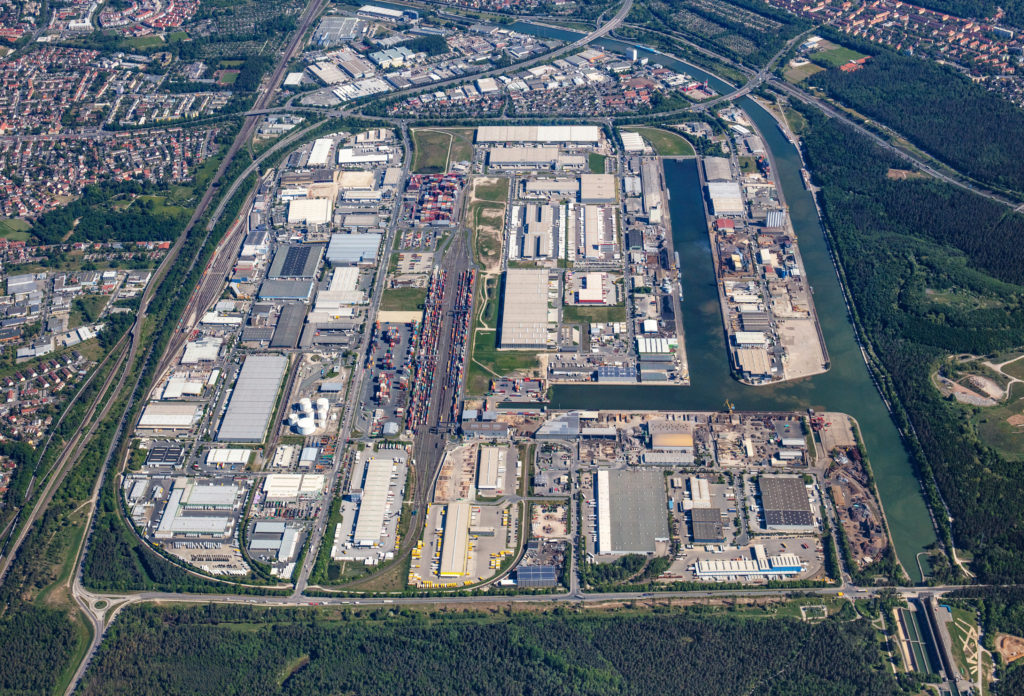 Quelle: Bavaria Luftbild Verlags GmbH, Neufahrn b. Freising
Quelle: Bavaria Luftbild Verlags GmbH, Neufahrn b. Freising
Die Gesamtwasserfläche im bayernhafen Nürnberg beträgt 23,4 Hektar.
Details der vorhandenen Hafenbecken:
- Hafenbecken 1: 1190 m lang / 100 m breit
- Hafenbecken 2: 565 m lang / 100 m breit
- Schwergut- / RoRo-becken 110 m lang / 12 m breit
- Stichbecken KV-Anlage: 115 m lang / 25 m breit
- Solltiefe: 3,50 m
Gesamte Uferlänge: 5.500 m
Der bayernhafen Nürnberg stellt Ansiedlern und Kunden eine leistungsfähige teilelektrifizierte Hafenbahninfrastruktur mit Stellwerk und insgesamt 54 km Gleislänge (davon sind bereits 12,5 km elektrifiziert) zur Verfügung. Die Eisenbahninfrastruktur ist bei Ganzzügen direkt an das Fernstreckennetz der DB sowie bei Einzelwagenverkehren über den Rangierbahnhof Nürnberg angebunden.
Durch Erweiterungsmaßnahmen des Hafenbahnhofs können Ganzzüge mit 700 m Länge ein- und ausfahren. Nahezu alle Grundstücke im westlichen und östlichen Teil des bayernhafen sowie alle Kaianlagen verfügen über eine Schienenanbindung der Hafenbahn.
Das Gleisnetz im bayernhafen Nürnberg umfasst insgesamt 54 km Länge. Damit verfügt dieser über eines der weitläufigsten öffentlichen Schienennetze in Bayern. Diese Infrastruktur wird von Eisenbahnverkehrsunternehmen und Verladern zunehmend für öko-effiziente schienengebundene Transportlogistik in Anspruch genommen. Insgesamt 132 Weichen, ein Hafen-Stellwerk und das KV-Terminal komplettieren die leistungsfähige Infrastruktur.
bayernhafen stellt seine leistungsfähige Schieneninfrastruktur Eisenbahnverkehrsunternehmen (EVUs) diskriminierungsfrei gegen Entgelt zur Verfügung. Die EVUs führen den Güterzugtransfer Bahnhof - Hafen und die Rangierleistungen innerhalb der Eisenbahninfrastruktur des bayernhafen Nürnberg in Eigenregie durch.
Folgende EVUs bieten am Standort Nürnberg Bahnservices an:
DB Cargo AG
Sandstraße 38-40
90443 Nürnberg
Flex Bahndienstleistungen GmbH
Hainstraße 6
04109 Leipzig
IGE GmbH & Co. KG
Bahngelände 2 II. Stock
91217 Hersbruck
METRANS Rail (Deutschland) GmbH
Köhlfleetdamm 5
21129 Hamburg
Voll erschlossene Ansiedlungsflächen, eine ausgezeichnete Infrastruktur und die trimodale Anbindung der drei Verkehrsträger Schiff, Bahn und LKW bieten die besten Voraussetzungen zur Unternehmensansiedlung. Besonders für Unternehmen aus der Logistikbranche und güterverkehrsintensiven Produktionsunternehmen dient der bayernhafen Nürnberg als idealer Standort.
Unser Grundstücks- und Gebäudemanagement bietet Ihnen:
- Erschließung, Verpachtung und Vermietung von Gewerbeflächen und Vermietung von Büroräumen und Hallenflächen
- Unterstützung bei Planungs- und Genehmigungsverfahren (Bauanträge usw.) sowie Finanzierungsfragen
Wir präsentieren Ihnen gerne unsere Leistungen in einem persönlichen Gespräch.
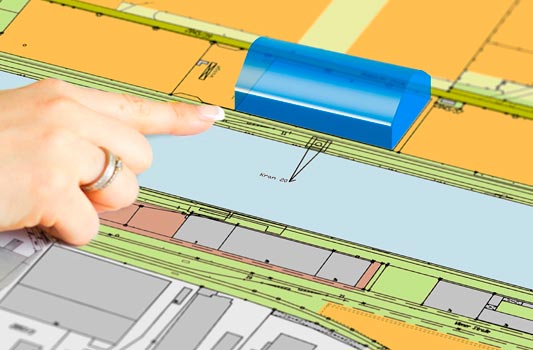
Sie suchen für Ihre Geschäfte ein Grundstück,
- das auf Ihre speziellen Bedürfnisse zugeschnitten ist,
- über Straßen-, Wasser- und/oder Bahnanschluss verfügt
- großräumig verkehrsgünstig angebunden ist
- einen Betrieb rund um die Uhr ermöglicht
- zu angemessenen Konditionen im Rahmen von Erbbau- oder Mietverträgen genutzt werden kann?
Sie wollen in guter Gesellschaft sein und
- das Know How der im Hafen angesiedelten Firmen (idealer Branchenmix)
- die Standortfaktoren der Region nutzen
- sich dank unserer Leistungen rein auf Ihr Kerngeschäft konzentrieren?
Dann sprechen Sie uns an. Wir präsentieren Ihnen gerne unsere Leistungen in einem persönlichen Gespräch!
Im bayernhafen Nürnberg wird eine breite Palette von Waren bewegt. Neben den traditionellen Gütern wie Getreide-, Dünge- und Futtermittel werden auch Eisenerze, Steine und Erden, Schwergut unserer Kunden und Nahrungsmittel umgeschlagen.
Sie haben noch Fragen zu unseren Dienstleistungen oder möchten Umschlag anmelden?
Gerne erstellen wir Ihnen ein individuelles Angebot.
Sprechen Sie uns einfach an!
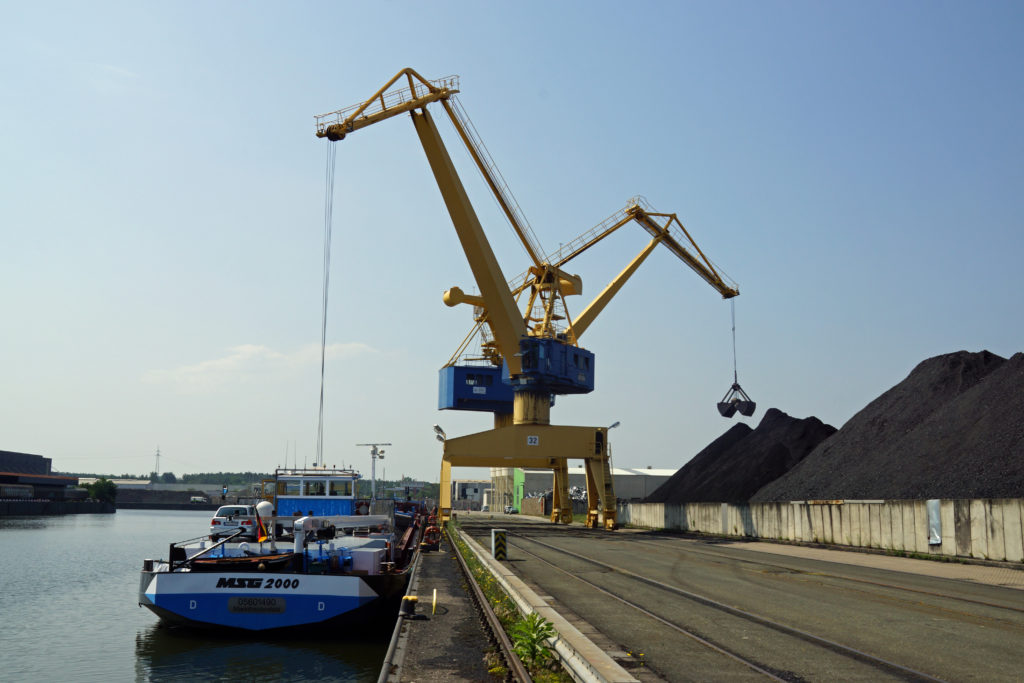
Umschlaganlagen
Für die spezifischen Anforderungen unterschiedlicher Güter, von Massengut bis Schüttgut, Schwergut sowie Containern, bietet Ihnen die trimodale Infra- und Suprastruktur zahlreiche effiziente Umschlaglösungen.
So sind im bayernhafen Nürnberg acht Vollportalwippdrehkrane mit einer Tragkraft von bis zu 40 Tonnen im Einsatz, welche auch im Twin-Umschlag eingesetzt werden können. Durch auswechselbare Greifer werden sie optimal für ihren Einsatz angepasst. Für jedes Gut wird das passende Equipment (verschiedene Greifer und entsprechende Anschlagmittel) gestellt. Zudem bieten die ansässigen Umschlagbetriebe Förderbandanlagen und Fallrohre.
- schienengebundene Vollportalwippdrehkrane bis 40 t Tragfähigkeit: 8 Stück
- Schwergutumschlagplatz mit Schwergutplatte und hydraulischem Litzenhubsystem für Lasten bis zu 600 t: 1 Stück
- Roll-on/Roll-off-Anlage für Lasten bis zu 1.250 t: 1 Stück
- Trimodales KV-Terminal: 1 Stück
- Reachstacker am Wassermodul: 2 Stück
Schwergutumschlag
Der bayernhafen Nürnberg bietet hervorragende Bedingungen für den Umschlag von Gütern bis zu 1.250 Tonnen. Die 1972 errichtete Roll-on/Roll-off-Anlage war die erste in einem europäischen Binnenhafen. Sie ermöglicht, sperrige, überlange und besonders schwere Güter auf Schiffe zu verladen. Die Palette der Schwer- und Sperrgüter umfasst vor allem Reaktorteile, Behälter, Kranteile, Schmelzöfen, Apparate für die chemische Industrie, schwerste Maschinen, Schwimmbagger und Yachten sowie eine Vielzahl von Großtransformatoren. Seit Anfang 2012 wird die gesamte Anlage ergänzt durch ein Litzenhubsystem für Lasten bis zu 600 t. Durch die ständige Verfügbarkeit dieser Krananlage wird nicht nur Zeit, sondern auch Kosten gespart.
Auf einem befestigten und beleuchteten Montageplatz können Geräte oder Konstruktionsteile, die in fertigem Zustand die Lichtraumprofile der Bahn oder Straße überschreiten würden, unmittelbar vor der Verladung zusammengebaut werden. Teure Montagen im Empfängerland werden so vermieden und das Straßennetz von Sondertransporten entlastet.
Für die Firmen des Großtransformatoren- und Schwermaschinenbaus, die in der Metropolregion Nürnberg ansässig sind, ist das unter anderem standortentscheidend.
Für den Umschlag und die Vermarktung des Schwergutplatzes ist die Gruber Logistics Project GmbH (vormals Züst & Bachmeier Project GmbH) zuständig.
Projektorganisation / Supervision:
Gruber Logistics Project GmbH
Rotterdamer Str. 2
90451 Nürnberg
www.gruber-logistics.com/en/project-cargo/
Niederlassungsleitung
Mr. Andreas Wöhler
ph. +49 911 6558 131
fx +49 911 6558 19
Andreas.Woehler@gruber-logistics.com
Projektorganisation / Projektteam:
Project Management
Mr. Stephan Seybold
ph: +49 911 6558 127
fx +49 911 6558-19
Stefan.Seybold@gruber-logistics.com
Project Management
Mr. Heiko Hornung
ph +49 911 6558 124
fx +49 911 6558 19
Heiko.Hornung@gruber-logistics.com
Project Management
Mr. Stefan Franzkowiak
ph +49 911 6558 128
fx +49 911 6558 19
Stefan.Franzkowiak@gruber-logistics.com
Den spektakulären Umschlag eines 530-Tonnen-Siemens-Trafos können Sie im Video von Gruber Logistics Project GmbH verfolgen
Sie sehen gerade einen Platzhalterinhalt von YouTube. Um auf den eigentlichen Inhalt zuzugreifen, klicken Sie auf die Schaltfläche unten. Bitte beachten Sie, dass dabei Daten an Drittanbieter weitergegeben werden.
Mehr InformationenLagerkapazität
Zur Lagerhaltung von Massen-, Stück-, Flüssig- und Schwergut sowie den verschiedenen Ladeeinheiten im Kombinierten Verkehr stehen im bayernhafen Nürnberg entsprechend ausgestattete Lagerkapazitäten bereit: Mit zahlreichen Silos, Öltanks, Containerdepots und technischen Einrichtungen sind unsere ansiedelten Unternehmen auf jegliche Transportlagerung spezialisiert. Umfassende Dienstleistungen wie Kommissionierung, Konfektionierung, Bearbeitung, Recycling und Finishing-Aktivitäten runden das Angebot ab.
- im Detail
- Öltanklager: 57.000 m³
- Siloanlagen: 92.000 m³
- Hallen und Lagerflächen: 840.000 m²
International und hochfrequent
Das trimodale KV-Terminal im bayernhafen Nürnberg ist die zentrale Drehscheibe für den Kombinierten Verkehr in Süddeutschland. Hochfrequente Verbindungen zwischen Wirtschaftszentren in Europa, den deutschen Seehäfen sowie China laufen hier zusammen. Die hohe Qualität der KV-Services und die schnellen Durchlaufzeiten werden durch ein leistungsstarkes IT-System unterstützt.
Die Terminalanbindung ist komplett elektrifiziert, wodurch sich der Traktionsaufwand verringert und die Betriebssicherheit erhöht. Die Betreibergesellschaft des Terminals, die TriCon Container-Terminal Nürnberg GmbH, erfüllt dabei eine zentrale Funktion in der KV-Transportkette. Zukunftsfähige Infrastruktur und Möglichkeiten einer Kapazitätserweiterung verdeutlichen die strategische Rolle dieses Standorts.
News from Nuremberg
Im bayernhafen Nürnberg steckt noch mehr als eine leistungsstarke trimodale Logistikpower. Tag für Tag arbeiten hier mehr als 6.700 Menschen…
Nürnberg 15. April 2025 – Im bayernhafen Nürnberg und bayernhafen Roth wurden im vergangenen Jahr 4,1 Mio. Tonnen (t) Güter…
Nürnberg, 21.03.2024– Im bayernhafen Nürnberg und bayernhafen Roth wurden im vergangenen Jahr 3,98 Mio. Tonnen Güter per Schiff und Bahn…
Nürnberg, 14.03.2023 – bayernhafen Nürnberg und Roth hat sich auch im schwierigen Jahr 2022 behauptet. 250.000 Lkw-Fahrten (fast 700 pro…
lädt …
Sie sehen gerade einen Platzhalterinhalt von Google Maps. Um auf den eigentlichen Inhalt zuzugreifen, klicken Sie auf die Schaltfläche unten. Bitte beachten Sie, dass dabei Daten an Drittanbieter weitergegeben werden.
Mehr InformationenFacts & figures
How did bayernhafen Nürnberg develop last year? Which goods did it handle most?
Find answers to these questions and the most important facts and figures here.
Cargo handling by inland waterway and rail 2023
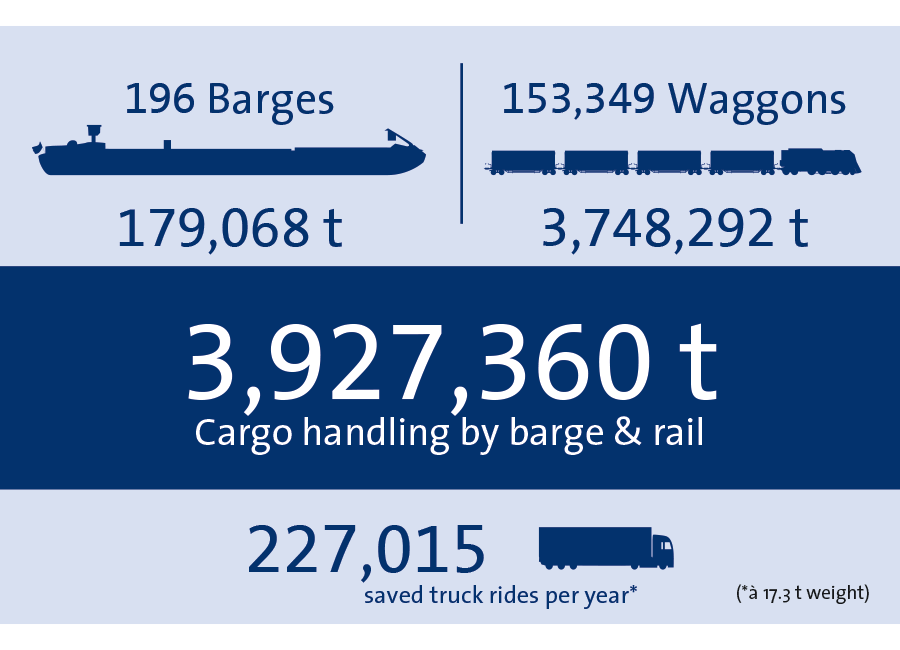
Inland waterway
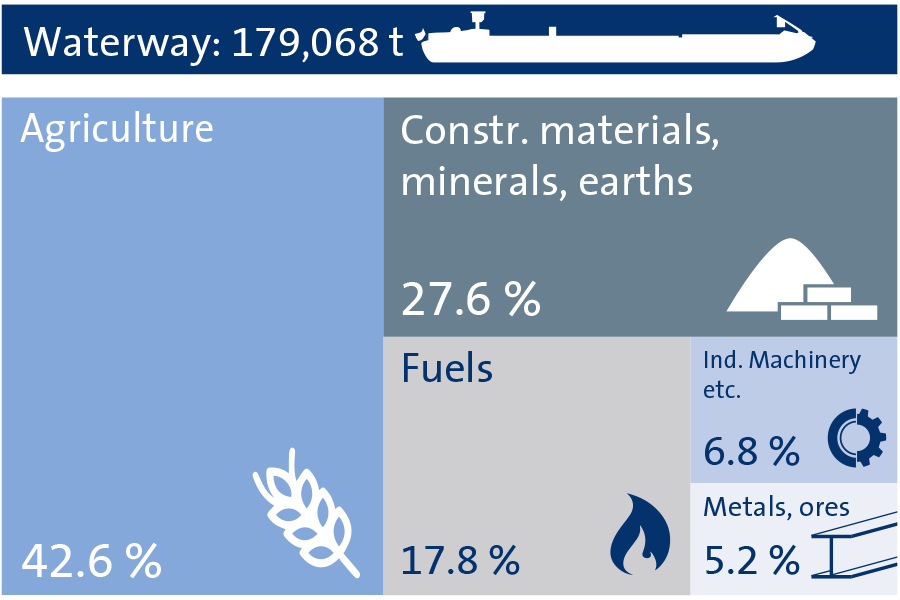
Rail
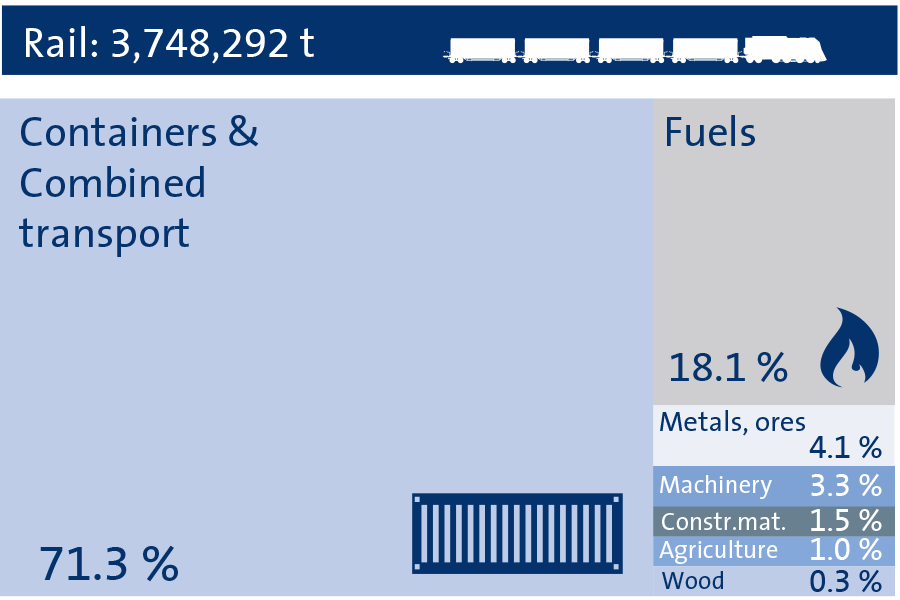
Download statistics (German only)
Operating information for rail and inland waterway traffic
The ports are subject to special rules and regulations. Here, you can download the latest Port Rules and Regulations for bayernhafen Nürnberg:
Inland waterway traffic
Information for shipmasters
Hafen Nürnberg-Roth GmbH, as the port company entrusted with the enforcement of the Port Rules and Regulations, issues the following order giving regard to Section 1.22 BinSchStrO (Inland Waterways Regulations):
- Mooring of vessels in the northern section of dock 1 (01.11. - 01.04.)
Contrary to our Port Rules and Regulations (Section 40 Mooring of Vessels) , in order to protect the embankment, the vessels must be moored with their bow pointing in the direction of the boathouse in the northern section of dock 1. - Hafen Nürnberg-Roth GmbH expressly states that winter road clearance (roads, paths, bank walls, shore gangways, embankment and bank-side steps, etc.) can only be carried out to a limited extent at bayernhafen Nürnberg and Roth due to the expansive port facilities. Shippers in particular are requested to take this into account!
- At the bayernhafen Nürnberg and bayernhafen Roth locations, there is a general ban on the use of anchors (Section 24 of the Port Rules and Regulations). The use of piles or stakes is also to be regarded in an equivalent manner. Under the OWiG (Regulatory Offences Act), contraventions may result in fines of up to € 1,000. The ordinance enters into force upon notification.
- Restrictions at the entrance to bayernhafen Nürnberg due to shallow water
Restriction: available channel width reduced on the north side by 10 m - Because of shallow water ship docking at the southend of quay 2 is not allowed.
- Because of quay construction ship docking at quay 1, from km 71,493 to km 71,918 is not allowed.
- Due to construction work at quay 1 the lighting of the bollards from km 70.410 to km 71.310 as well as that of the fire roads 11 and 12 are currently out of service
Ships can be registered at bayernhafen Nürnberg via VHF channel 11 or by email: hafenmeister@bayernhafen.de
Please feel free to contact our Port Master if you have any questions.
Ships can also be registered online:
logbuch bayernhafen
You can download the user guide for the logbuch bayernhafen here:
Benutzerhandbuch logbuch (1,54 MB)
- Drinking water can be obtained from a water dispenser located at the southern end of quay 3. Water can be drawn from the automatic dispenser at a cost of € 2.00 for six minutes.
- Electricity can be obtained at quays 1, 2, 3 and 8. Prices apply per complete calendar day! 230 V: € 6.00, 400 V: € 10.00
- Waste disposal:
You can obtain free waste disposal bags from the Port Master. Please deposit the sealed bags on the quay streets. The port company where you load or unload will take care of disposing of the bags. It is not permitted to hose down and clean ships at bayernhafen Nürnberg and bayernhafen Roth. If dangerous objects enter the port waters, please inform the Port Master and the Water Police immediately.
Rail Service
Bayernhafen GmbH & Co. KG as the railway infrastructure company, provides its tenants and customers with a performance-ready port rail infrastructure with a signal box and a total of 54 km platform length (therefore 12.5 km electrified).
The railway infrastructure is, in the case of full trains, directly connected to the Deutsche Bahn long-distance network, as well as in the case of single-carriage transportation through the Nuremberg Railway Yard. Through extension measures to the Port Railway Station, full trains with a length of 700 m can travel in and out. Almost all of the lots in the Western and Eastern part of bayernhafen, as well as all quay facilities, have a rail connection to the port railway.
Guided tours
History
The history of bayernhafen Nürnberg goes much further back than you would expect from today’s modern facility.
The vision of connecting the Main and the Danube with an artificial water route, and therefore to make a continuous shipping route from the North Sea to the Black Sea across the whole of Europe a reality, already existed in the 8th century.
You can download the entire chronicle (German only) here:
After various attempts to implement the project ended in failure, the plan only took on concrete form again in the 19th century. The idea, for political and economic reasons, of connecting Franconia and Upper Bavaria, as well as the Southern states of the German Federation, more closely with their Northern neighbours gave a stronger impetus to the planning of the artificial water route.
In 1825, King Louis I contracted the construction of a canal link.
In 1837, the construction works began on the 172 kilometre long route of the Louis-Danube-Main Canal. The canal, which then ran from Nuremberg to Bamberg, was completed in 1843.
During these years of intensive work, 101 locks, countless canal bridges, road and footpath overpasses, road underpasses, dams, clefts and culverts were built.
On the then 15.80-metre wide and 1.46-metre deep canal, ships of a length of up to 32 metres and a width of up to 4.45 metres with a maximum load capacity of 120 tons plied the route. Yet, unfortunately, this was not enough. As a result of the more progressive rail transport and the insufficient dimensions of the Louis-Danube-Main Canal, shipping traffic decreased rapidly.
The new Main-Danube Canal was, contrary to its predecessor, connected to the entire European water route network from the beginning. Furthermore, it boasted a sufficient width of 55 metres and 4 metres depth to provide a regular, fully laden ship of up to 3,000 tons with a safe and profitable passage of up to eleven kilometres per hour. Today the canal facilitates countless connections along the water route.
In 1926, the Master Development Plan of the City of Nuremberg marked out a trading port that corresponds to the 337 hectares of today.
11.11.1966: After three years of negotiations, during a ceremony at the grand meeting hall of the municipal council, the Port Agreement was signed. The Port Agreement governs the practical and financial relationships between the Free State of Bavaria and the City of Nuremberg for the building and operation of the State Port. The Deputy Prime Minister and State Minister for Food, Agriculture and Forestry, Dr. Hundhammer, the State Minister for Finance, Dr. Pöhner and the State Minister of the Interior, Dipl.-lng. Junker, sign the contract on behalf of the Free State of Bavaria and the Lord Mayor of Nuremberg, Dr. Urschlechter, on behalf of the City of Nuremberg.
With the first detonation on 5 July 1968, construction work began on the port of Nuremberg, which in the 30 years of its existence has developed into the largest logistics and service centre in southern Germany.
23.09.1972: The Port of Nuremberg is opened by the Bavarian Minister President, Alfons Goppel, in the presence of countless guests of honour, including the Federal Minister for Transport, Lauritz Lauritzen, and practically the entire Bavarian cabinet. 200,000 people gather to watch from the shore of the canal and the east quay. The guests of honour travel in nine passenger ships from the Alte Veste in Fürth to the port, which is covered by a curtain of water sprayed by the fire service. The convoy of ships and the guests of honour, followed by 26 motorised freight ships, sail into the port. On quay 2, at the head of the council, Lord Mayor Dr. Urschlechter, greets the guests of honour. In the afternoon, the event is given an international boost in a ceremony held as part of the International Rhine-Main-Danube Exhibition Europe 72. The ceremonial addresses are held by the Austrian Foreign Minister Dr. Kirchschläger and President Pflimlin of Strasbourg.
31.07.1995: The notarial contracts for the organisational privatisation of the Nuremberg Port Authority are certified. The ports of Nuremberg and Roth are henceforth to be operated and developed by Hafen Nürnberg-Roth GmbH. The then port director, Reg. Bmstr. Dipl.-Ing. Walter Schmidt, is appointed Managing Director.
07.10.2004: Official ground-breaking ceremony for the trimodal CT handling facility of Hafen Nürnberg-Roth GmbH by the Bavarian Minister of Economic Affairs Dr. Otto Wiesheu, Mayor Horst Förther, Spokesman on Economic Affairs Dr. Roland Fleck and Managing Director Harald Leupold.
2.07.2006: Official inauguration ceremony of the trimodal CT handling facility in the presence of 300 guests from Germany and abroad as well as tributes from the Bavarian Minister of Economic Affairs Erwin Huber, Mayor Horst Förther, Dr. Roland Fleck and Managing Director Harald Leupold.
5.12.2009: Official opening ceremony of the 2nd module of the combined transport handling facility of DB Netz AG in the freight village. Operating company TriCon.
bayernhafen Nürnberg
Hafen Nürnberg-Roth GmbH Rotterdamer Straße 2
90451 Nürnberg
Ansprechpartner
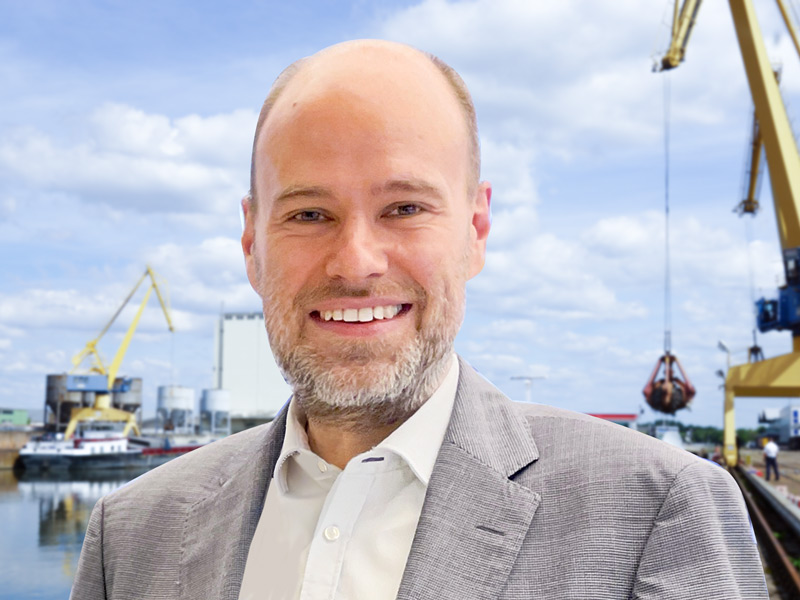
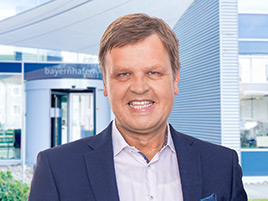

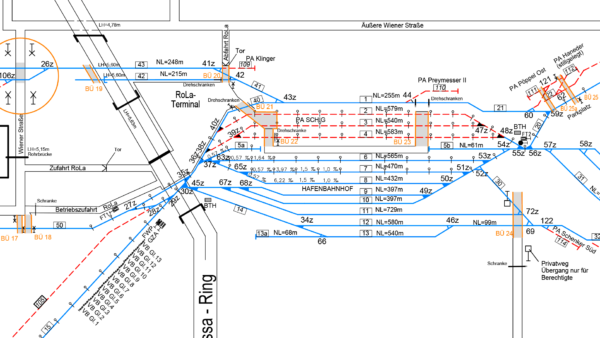
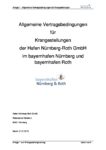

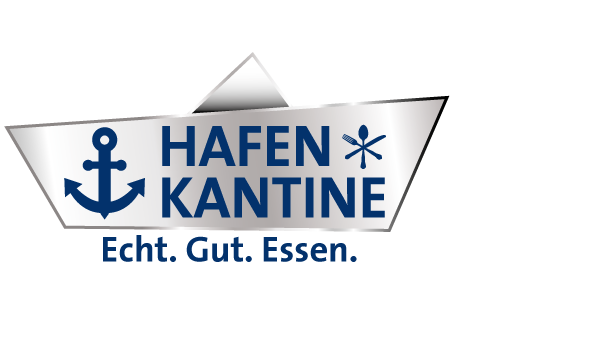
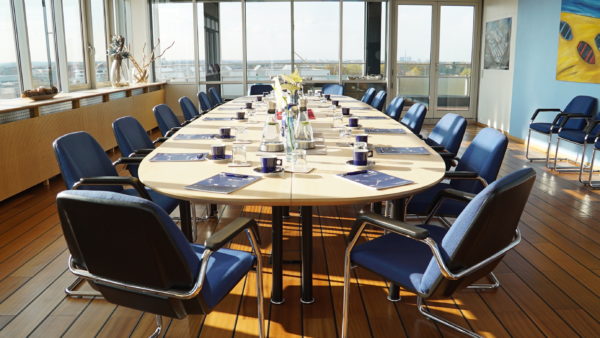
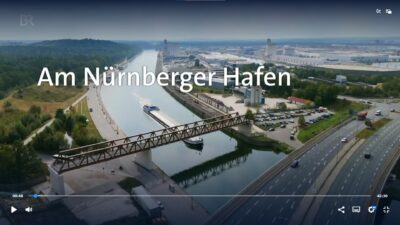
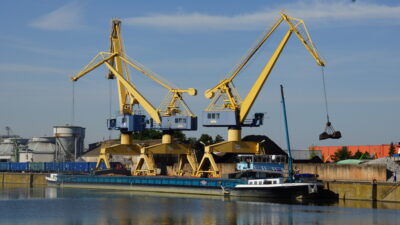
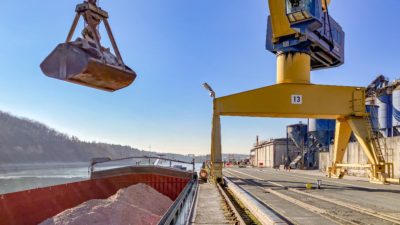
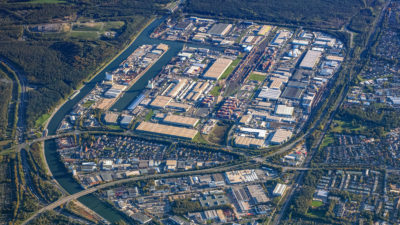
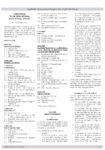
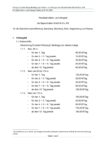
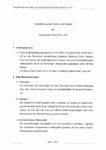
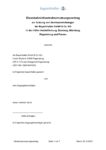
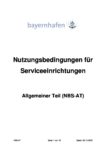
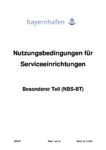
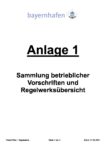
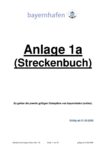
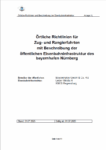
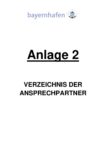
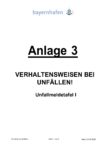
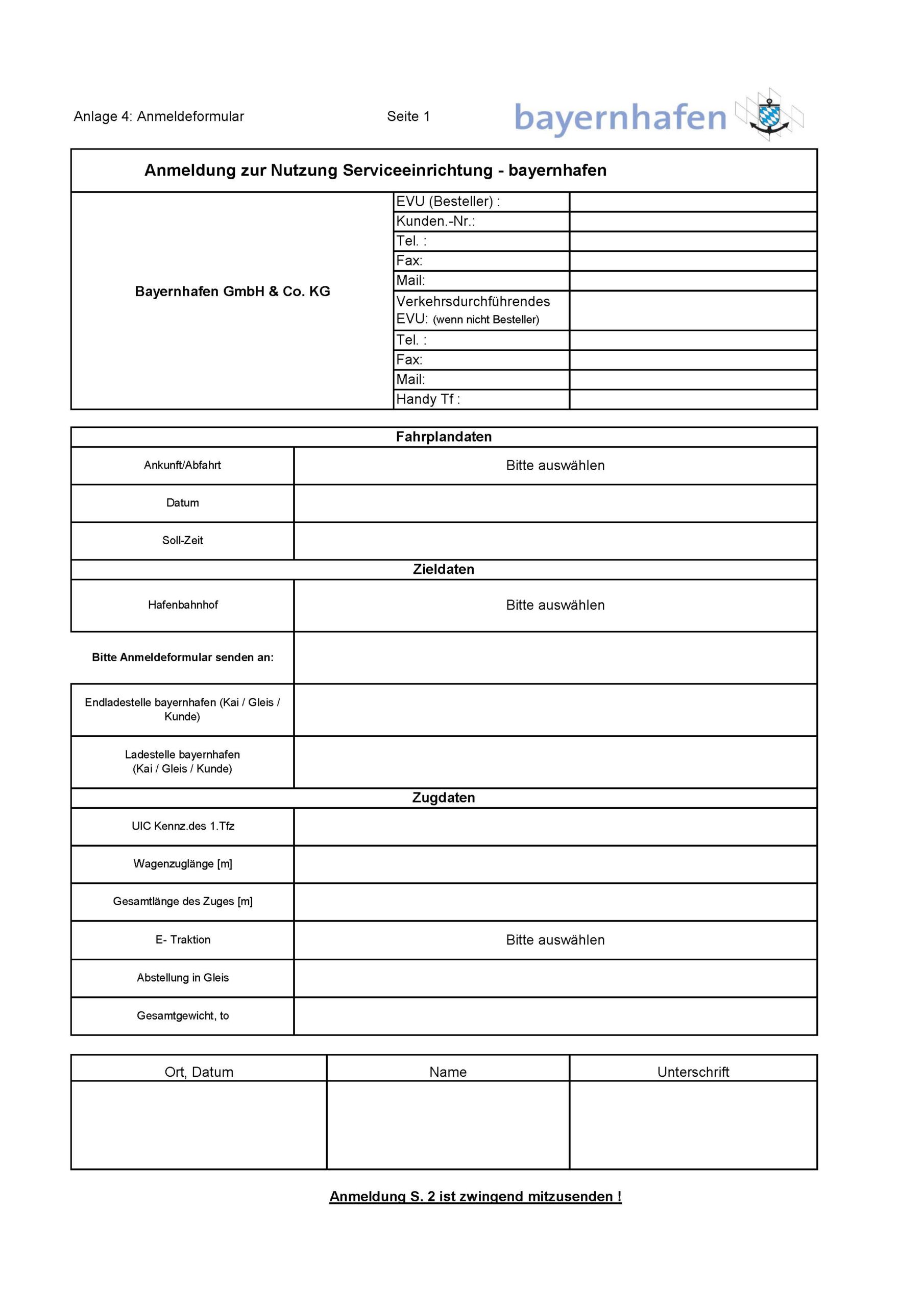
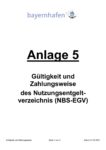
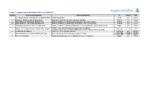
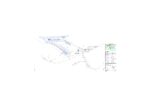

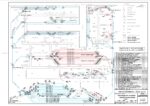


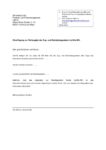
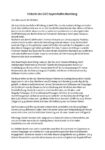

 nuernberg@bayernhafen.de
nuernberg@bayernhafen.de 0911 64294-10
0911 64294-10